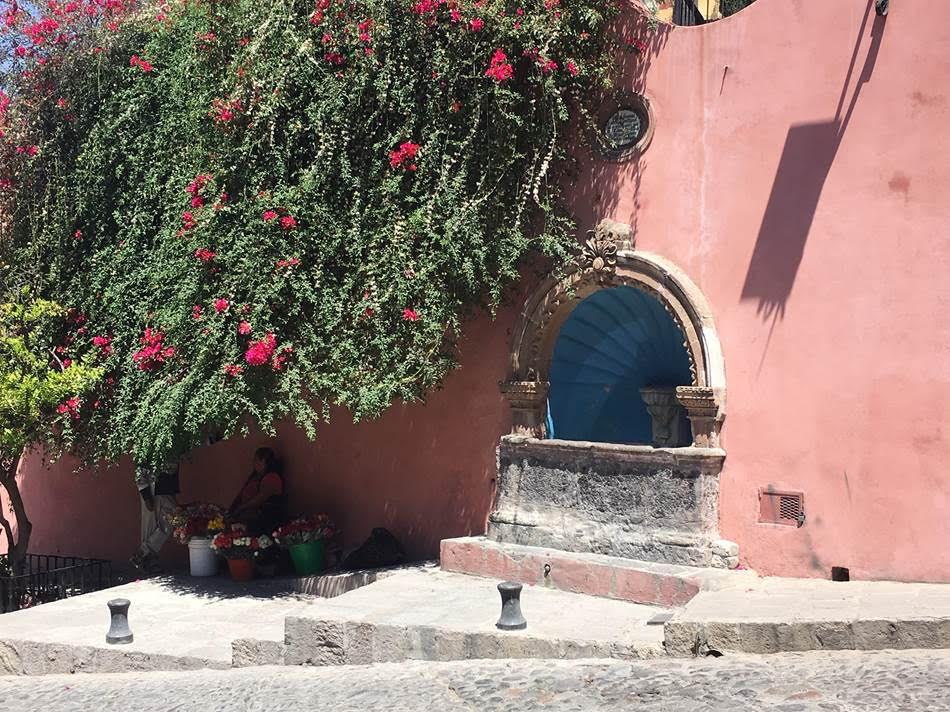Dear Artist,
Olivia Remes, an anxiety researcher at Cambridge, has discovered that we can develop coping skills for anxiety through the things we do. She says the way we cope can actually have a direct impact on how much anxiety we experience. We can lower anxiety just by making a few tweaks to how we deal with stress in the first place.
Remes’s technique is something she calls, “Do it badly,” and, for artists, the tools for doing it badly are in the studio. If our job is to solve creative and technical problems, and we do this by repeating actions over and over again until there’s a breakthrough, we can double down on our skill building by working towards creative and technical mastery while at the same time strengthening mental fortitude by stepping up to the discomfort. Think of the sculptor who cracks her marble with a clumsy whack of her chisel. Ten thousand hours later, she’s on a first-name basis with the stone and her tools and knows just how hard to hit it. If you’d accidentally cracked a few thousand pounds of Carrara, a little anxiety would be part of every approach. Past failures, or a fear of future ones can elevate anxiety or, worse, stop us from making anything at all.
It may sound obvious, but jumping in without worrying about how it’s going to turn out — and possibly doing it badly — is a technique that must be refreshed and practiced over a lifetime. Professionals with expectations of themselves, working for deadlines, on commissions and for shows are as vulnerable as nervous beginners. As open play diminishes and performance pressures build, anxiety can walk through the door like an uninvited guest and stifle real, cosmic-level potential. I personally work my own, do-it-badly technique with a private, anxiety-quieting mantra: “What’s the worst that can happen? Removing staples is how I get to all my breakthroughs.”
Sincerely,
Sara
PS: “Control of consciousness determines the quality of life.” (Mihaly Csikszentmihalyi, from Flow: The Psychology of Optimal Experience)
Esoterica: Remes says there’s a difference between normal anxiety, which we all experience, and an anxiety disorder, a mental illness experienced by 1 in 14 people worldwide. For example, women living in poor areas have a higher risk of anxiety than women living in more affluent areas for the obvious reasons of income, violence, access to childcare and health resources. But when Olivia’s team zoomed in, they found that if the women had coping resources, they didn’t have anxiety. In another study, they saw that people who had faced extreme hardship like war or natural disaster remained healthy and free of mental disorders if they had coping strategies, while those without techniques spiraled into an anxiety disorder. It seems awareness and skill building are a good beginning, because the average amount of time a person waits before seeking help is 10 years.
Olivia Remes’ TEDx talk on doing it badly is here.
 The Letters: Vol. 1 and 2, narrated by Dave Genn, are available for download on Amazon, here. Proceeds of sales contribute to the production of The Painter’s Keys.
The Letters: Vol. 1 and 2, narrated by Dave Genn, are available for download on Amazon, here. Proceeds of sales contribute to the production of The Painter’s Keys.
“Contrary to what we usually believe, moments like these, the best moments in our lives, are not the passive, receptive, relaxing times—although such experiences can also be enjoyable, if we have worked hard to attain them. The best moments usually occur when a person’s body or mind is stretched to its limits in a voluntary effort to accomplish something difficult and worthwhile. Optimal experience is thus something that we make happen.” (Mihaly Csikszentmihalyi)
Featured Workshop
Join painter/author Ellie Harold in sunny Mexico for a week of immersion in a facilitated discovery of your deepest and most essential artist self. If you’re feeling blocked, thwarted or simply longing for a more meaningful expression, the retreat is a unique opportunity to focus on your life/art purpose, discover new directions and explore next steps. You’ll enjoy your own room in the charming Casa de la Noche in San Miguel’s Historic Centro district, painting and writing (with materials provided), guided reflections and focused discussion with plenty of time to explore the color and culture of this vibrant art city. Created with the needs of mature women in mind, this retreat focuses on process rather than product and is for both experienced and novice art-makers. Limited to 12. Register by November 30 to receive Early Bird free shuttle. One Discounted Spot Now Open! Click here for a full description, photos and testimonials from past participants.
Featured Artist
Robert’s technique includes a tradition of strong design with patterns of color and form, with a pervasive sense of personal style. Grand themes are transposed onto small panels and larger canvases in a manner similar to members of the Group of Seven. Most of Robert’s work is in acrylic. He has also done considerable work in oils, watercolour, and silk screen printing.









10 Comments
“Artists must preside over their states of consciousness with obstinate rigor.” Leonardo da Vinci, “
V
Well I guess it’s my habit to think and question the ramble of others and here is a quote from “Leonardo da Vinci” who mentions states of consciousness but it fits better as a more discipline work habit. The battle between the analytical mind and the creative mind is on going and is two different states of consciousness. The “wow”art work only happens when one slips into the creative realm where one lets go of all thoughts and allow creation to flow. It’s good to have discipline but without the creative mind art is meaningless. It’s easy to be a painter but rare to be an “Artist.”
Sarah, your advice is sound and and an excellent practice. I concur that it is a lifetime approach and not one just for beginners. Another great post! Thank you :)
Even a “wrong” brushstroke, one that is spontaneous and unplanned, and that has an unexpected effect, is superior to one that is carefully laid down, with the anxiety of years behind it. Confidence can be felt, like heat, and is evident in the productions of those who have done so much work that they are anxious no longer, because they realize that the work will not kill them, but the worry will. Great post Sarah, thank you.
“The stroke doesn’t have to be accurate, but it must be sure. “(Tony Couch)
So true. Sometimes , when I am in a moment of confusion about which way to go with a work, it helps me to say to myself, “what do I have to lose?” That helps give me the freedom to experiment and learn something new.
Or, as Ann Lamott, writing teacher says succinctly — “don’t be afraid to write a sh*tty first draft”!
For years, I have subscribed to my own mantra – “If it’s worth doing, it’s worth doing badly – rather than not at all.” And yesterday, I heard a presentation from the wonderful Lian Zehn wherein he remarked that Chinese painters first “learn how to throw paintings out” by the thousands! And since I am a watercolor painter, I have to keep reminding myself that it is just a piece of paper…
At 56 years old I have recently committed myself to learning to play the piano for at least one year. Six months in I’m happy to say I’m learning how to do it badly. All the daily frustrations of piano practice help set me up for my studio time. Practice doing it badly is very freeing experience. I’m building up callouses on my artistic personality that allow me to play and make messes without judgement and has also given me a sense of determination to keep trying. It’s the process right?
Wow – this is so on point – relevant to me personally as well as my students. I teach adult watercolor classes and stumble on beginners who struggle with this anxiety tied to expecation. I will be reading this in my watercolor classes this week! Thank you for writing about what we are all thinking.
Sara – one more question – we had an animated discussion in class around what you meant by “removing staples.” I took it literally – removing staples from canvas, another saw it as removing routine from your practice and another saw it a third way. Could you clarify your intent?